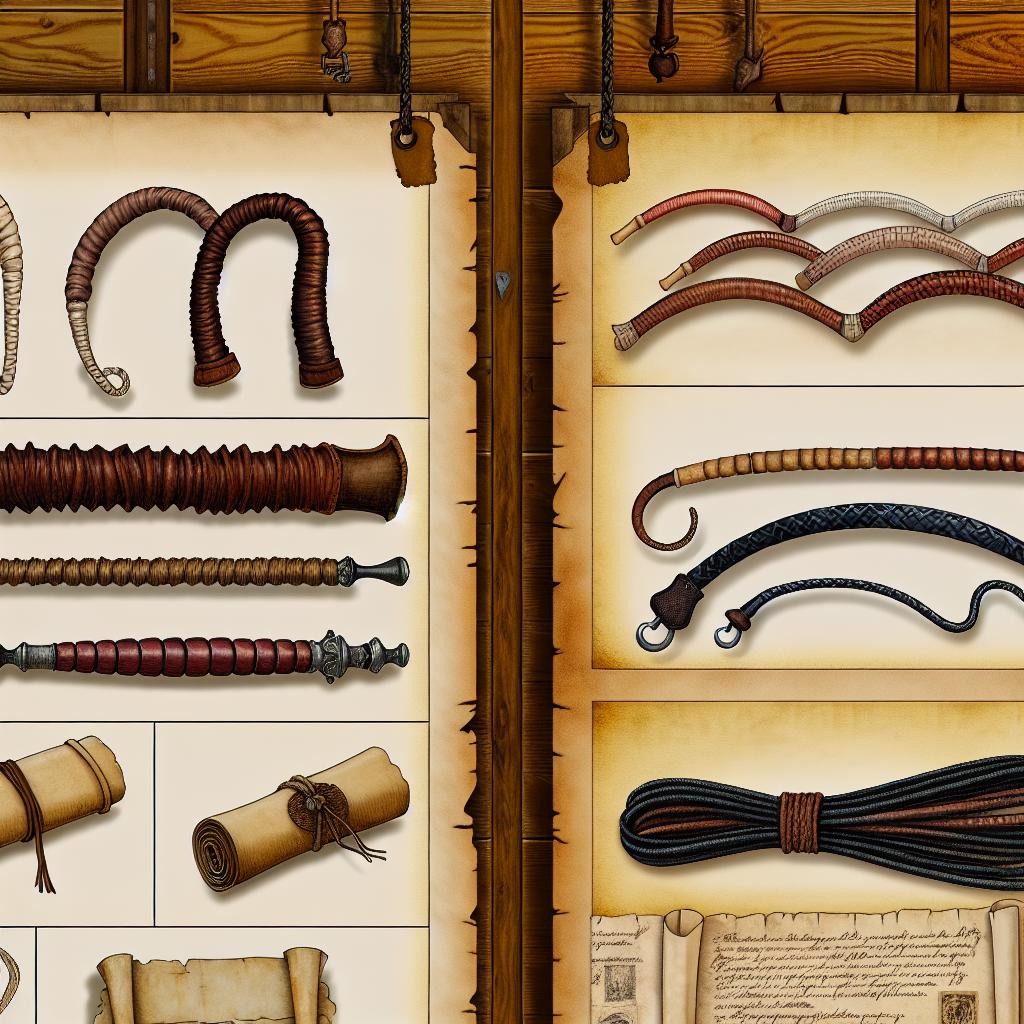
The history of bullwhips.
The Origins of Bullwhips
The bullwhip, known for its sharp cracking sound, has a history that can be traced back thousands of years. While its precise origins are somewhat obscure, evidence suggests it was used by various ancient civilizations for a range of applications that were both practical and essential. From agricultural needs to martial functions, the bullwhip’s development is thought to have emerged independently across several cultures due to its versatility.
Early Uses in Agriculture and Herding
Traditionally, the bullwhip’s primary use was in the realm of herding livestock, particularly cattle. This tool was favored for its unique ability to generate a loud noise with ease, serving as a useful mechanism to manage and control large herds without causing harm to the animals. Historical records indicate that early cultures such as those in Egypt, China, and Greece integrated the bullwhip into their farming economies. This integration allowed these societies to efficiently move and control animals, which was crucial for agricultural operations.
Construction and Design
Over the centuries, the design and construction of bullwhips have seen significant advancements. Initially, they were crafted from materials that ancient peoples had ready access to, such as animal hides and plant fibers. These rudimentary designs met the basic needs of the users. In modern times, however, bullwhips have been refined and are typically crafted from high-quality leather. This leather is selected for its durability, flexibility, and ability to withstand repeated use.
A bullwhip is composed of several parts, each contributing to its overall functionality: the fall, the thong, the cracker, and the handle. The fall is the flexible section that extends from the whip’s core, while the thong comprises the whip’s main body. The cracker, attached to the end of the fall, is the part that produces the whip’s distinctive sound. Finally, the handle provides the user with the necessary grip to effectively wield the whip. Each component is intricately designed to transfer energy from the handle all the way to the tip, allowing the whip to break the sound barrier and create the characteristic crack.
The Crack: A Display of Physics
The iconic crack of a bullwhip is not merely an auditory signal but a remarkable phenomenon involving physics. The loud cracking sound is the result of a segment of the whip moving faster than the speed of sound, which results in a small sonic boom. This occurrence is an excellent example of the intersection between physics and craftsmanship, highlighting human innovation in toolmaking. The ability to create such a sound without electronic or mechanical assistance underscores the sophisticated understanding of motion and energy transfer involved in whip-making.
Evolution and Modern Use
Bullwhips have evolved significantly throughout their history, extending their utility far beyond their initial agricultural purposes. In the 19th century, bullwhips became particularly associated with American cowboys, who relied on them for handling livestock on expansive ranches and during cattle drives. This association with the American cowboy helped to cement bullwhips within the cultural iconography of the American West.
Their role in the cultural imagination eventually expanded to include appearances in literature, film, and stage productions. This cultural integration not only solidified their iconic status but also introduced bullwhips to a wider audience. In contemporary settings, bullwhips are often used in performing arts contexts. Circuses and film stunts frequently employ bullwhips to showcase a combination of their auditory appeal and the skill required to use them effectively.
Additionally, a global community of enthusiasts continues to preserve the craft of whip-making. These individuals are dedicated to maintaining and passing down the traditional techniques of creating bullwhips. This passion for preservation ensures that the knowledge and proficiency associated with bullwhip craftsmanship remain vibrant and appreciated in modern times.
Conclusion
In conclusion, the history of the bullwhip is a narrative of enduring utility and honed skill in both its usage and crafting. From its origins in ancient herding societies to its application in modern entertainment, the bullwhip serves as a testament to human ingenuity and the ability to adapt tools for various purposes. Whether used for its original agricultural applications or as a captivating element in performances, the bullwhip continues to hold the fascination and respect of those who know how to wield it and those who admire its design.
For those interested in delving deeper into the cultural and historical significance of bullwhips, numerous resources are devoted to preserving the lore and techniques of such traditional tools. These resources provide valuable insights into the legacy of bullwhips and their place in historical contexts.